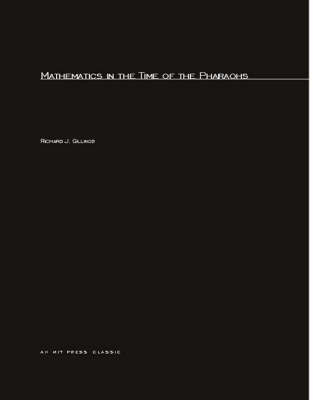
Mathematics in the Time of the Pharaohs
Seiten
1972
MIT Press (Verlag)
978-0-262-07045-4 (ISBN)
MIT Press (Verlag)
978-0-262-07045-4 (ISBN)
- Titel ist leider vergriffen;
keine Neuauflage - Artikel merken
In writing the first book-length study of ancient Egyptian mathematics, Richard Gillings presents evidence that Egyptian achievements in this area are much more substantial than has been previously thought. He does so in a way that will interest not only historians of Egypt and of mathematics, but also people who simply like to manipulate numbers in novel ways. He examines all the extant sources, with particular attention to the most extensive of these--the Rhind Mathematical Papyrus, a collection of training exercises for scribes. This papyrus, besides dealing with the practical, commercial computations for which the Egyptians developed their mathematics, also includes a series of abstract numerical problems stated in a more general fashion.The mathematical operations used were extremely limited in number but were adaptable to a great many applications. The Egyptian number system was decimal, with digits sequentially arranged (much like our own, but reading right to left), allowing them to add and subtract with ease. They could multiply any number by two, and to accomplish more extended multiplications made use of a binary process, successively multiplying results by two and adding those partial products that led to the correct result. Division was done in a similar way. They could fully manipulate fractions, even though all of them (with one exception) were expressed in the unwieldy form of sumes of unit fractions--those having "1" as their numerator. (The exception was 2/3. The scribes recognized this as a very special quantity and took 2/3 of integral or fractional numbers whenever the change presented itself in the course of computation.) In expressing a rational quantity as a series of unit fractions, the scribes were generally able to choose a simple and direct solution from among the many--sometimes thousands--that are possible. Doing this without modern computers would seem quite as remarkable as building pyramids without modern machinery.The range of mathematical problems that were solved using these limited operational means is far wider than many historians of mathematics acknowledge. Gillings gives examples showing that the Egyptians were able, for example, to solve problems in direct and inverse proportion; to evaluate certain square roots; to introduce the concept of a "harmonic mean" between two numbers; to solve linear equations of the first degree, and two simultaneous equations, one of the second degree; to find the sum of terms of arithmetic and geometric progressions; to calculate the area of a circle and of cylindrical (possibly even spherical) surfaces; to calculate the volumes of truncated pyramids and cylindrical granaries; and to make use of rudimentary trigonometric functions in describing the slopes of pyramids. The Egyptian accomplishment that historians have tended to repeat uncritically, one after another, is one that Gillings can find no evidence to support: that the Egyptians knew the Pythagorean theorem, at least in the special case of the 3-4-5 right triangle.
| Erscheint lt. Verlag | 22.5.1972 |
|---|---|
| Zusatzinfo | Illustrations, 1map |
| Verlagsort | Cambridge, Mass. |
| Sprache | englisch |
| Maße | 178 x 254 mm |
| Gewicht | 454 g |
| Themenwelt | Mathematik / Informatik ► Mathematik ► Algebra |
| ISBN-10 | 0-262-07045-6 / 0262070456 |
| ISBN-13 | 978-0-262-07045-4 / 9780262070454 |
| Zustand | Neuware |
| Haben Sie eine Frage zum Produkt? |
Mehr entdecken
aus dem Bereich
aus dem Bereich
Buch | Softcover (2022)
Springer Spektrum (Verlag)
39,99 €


